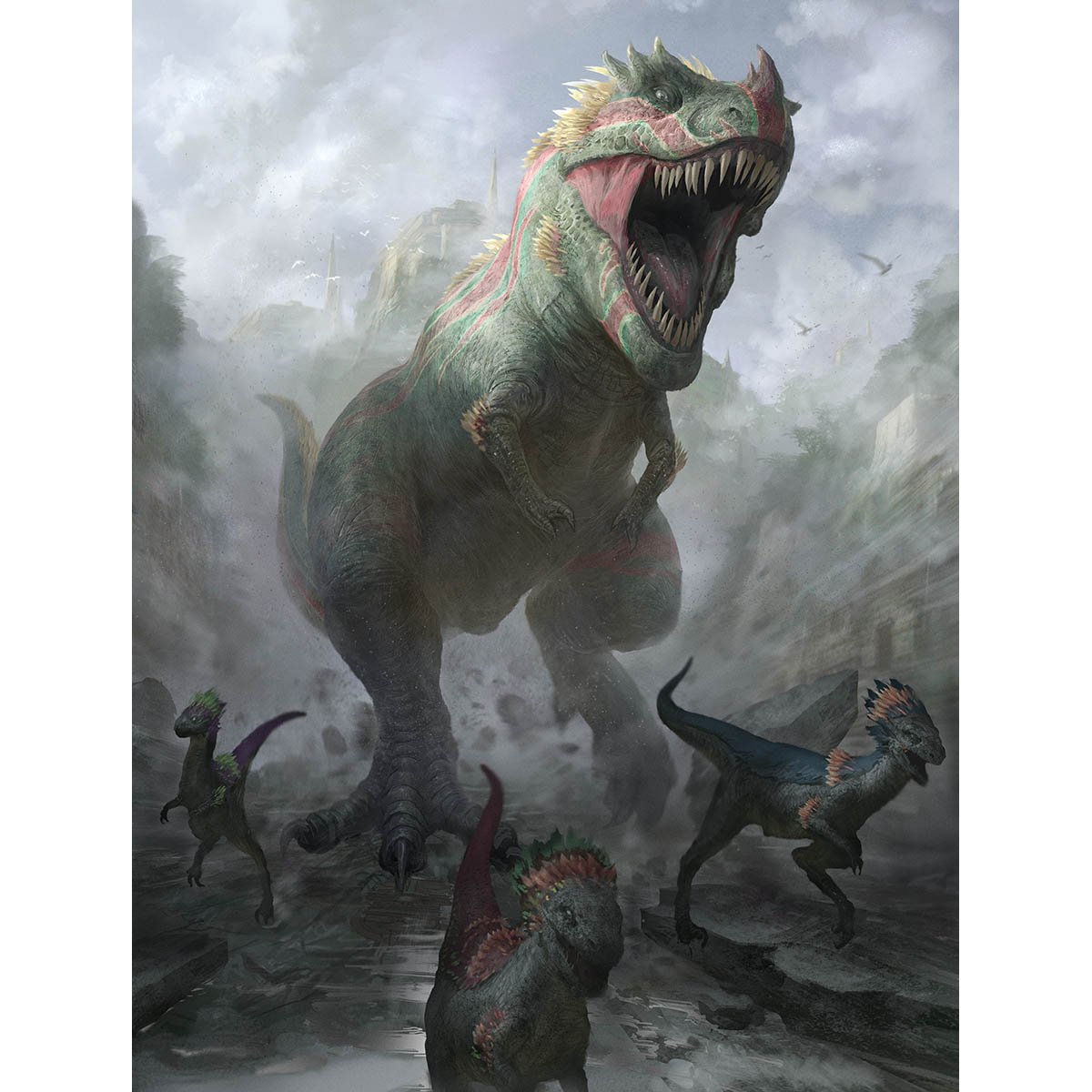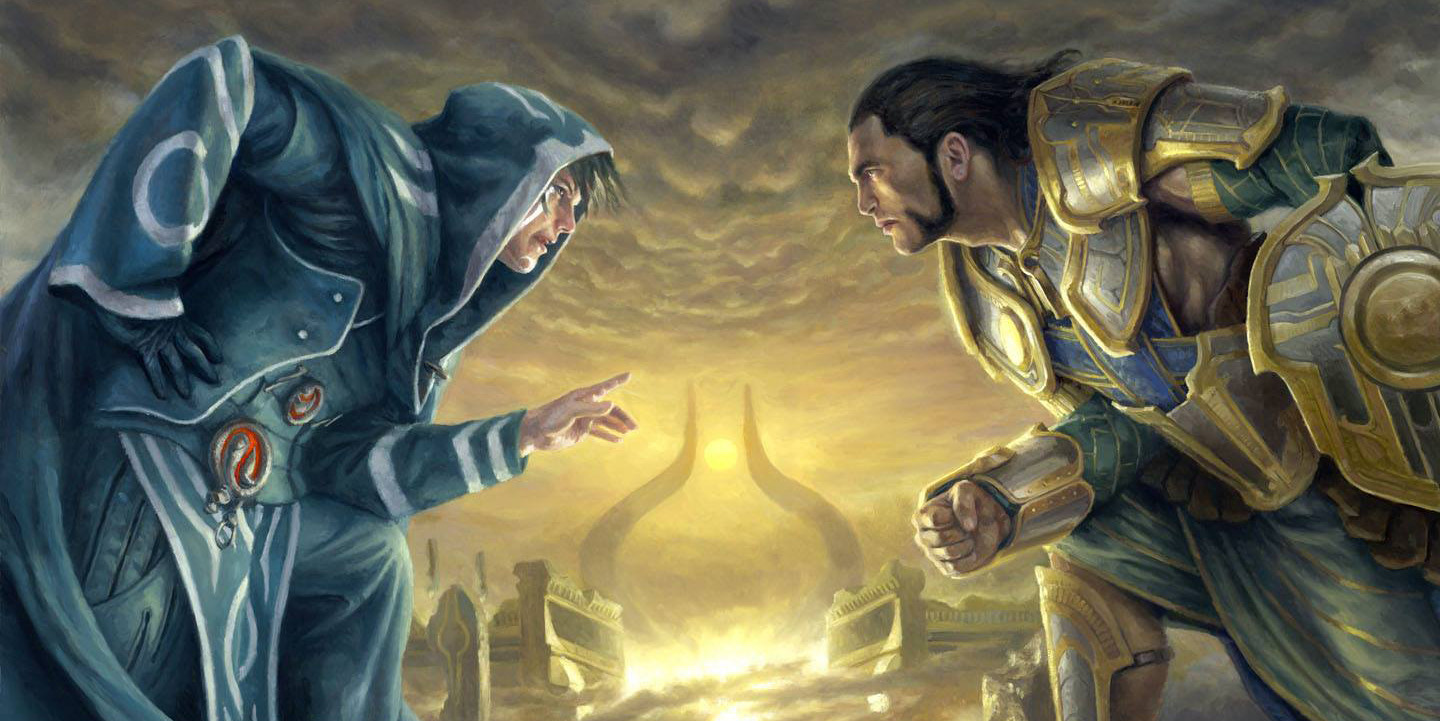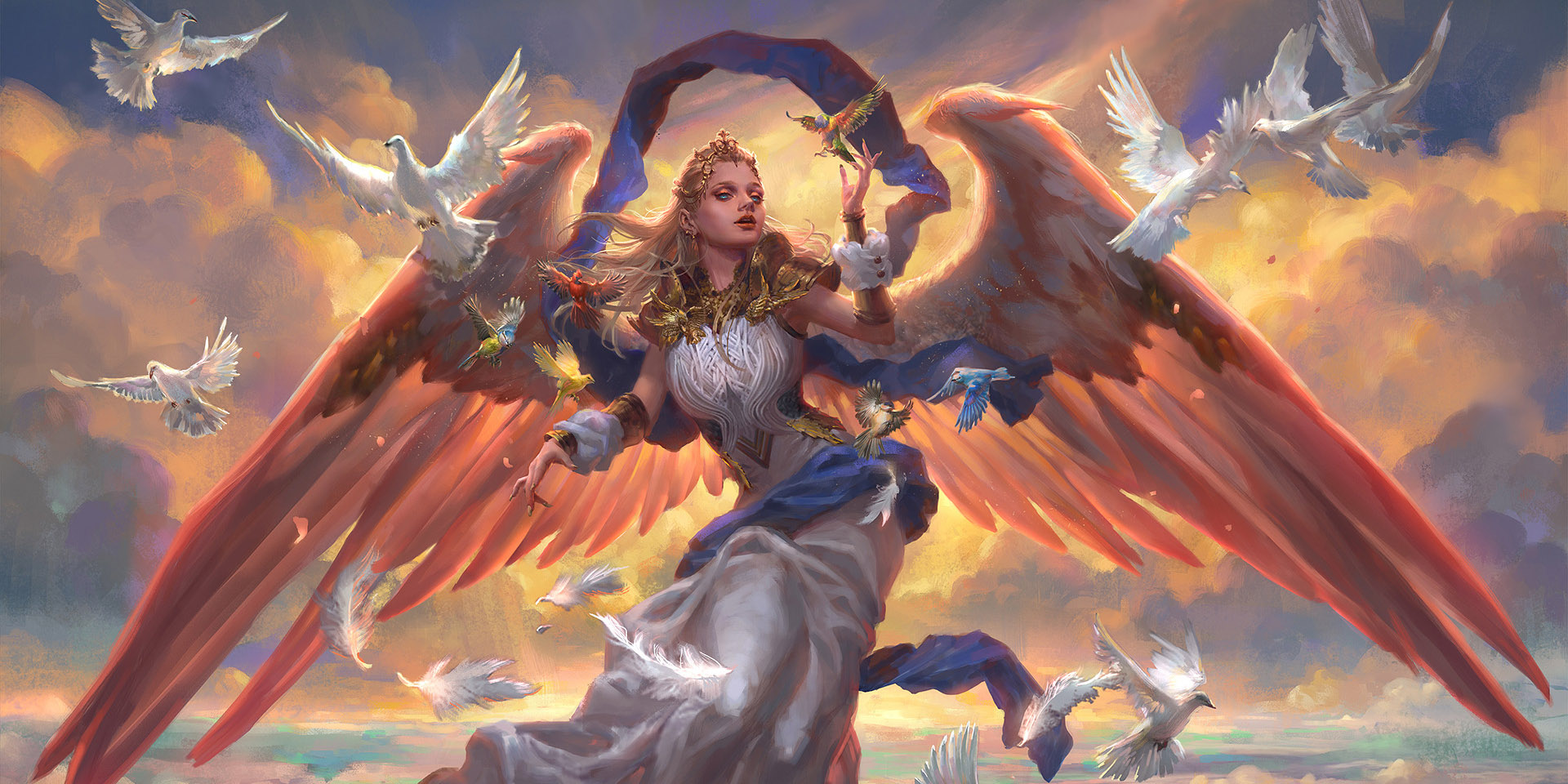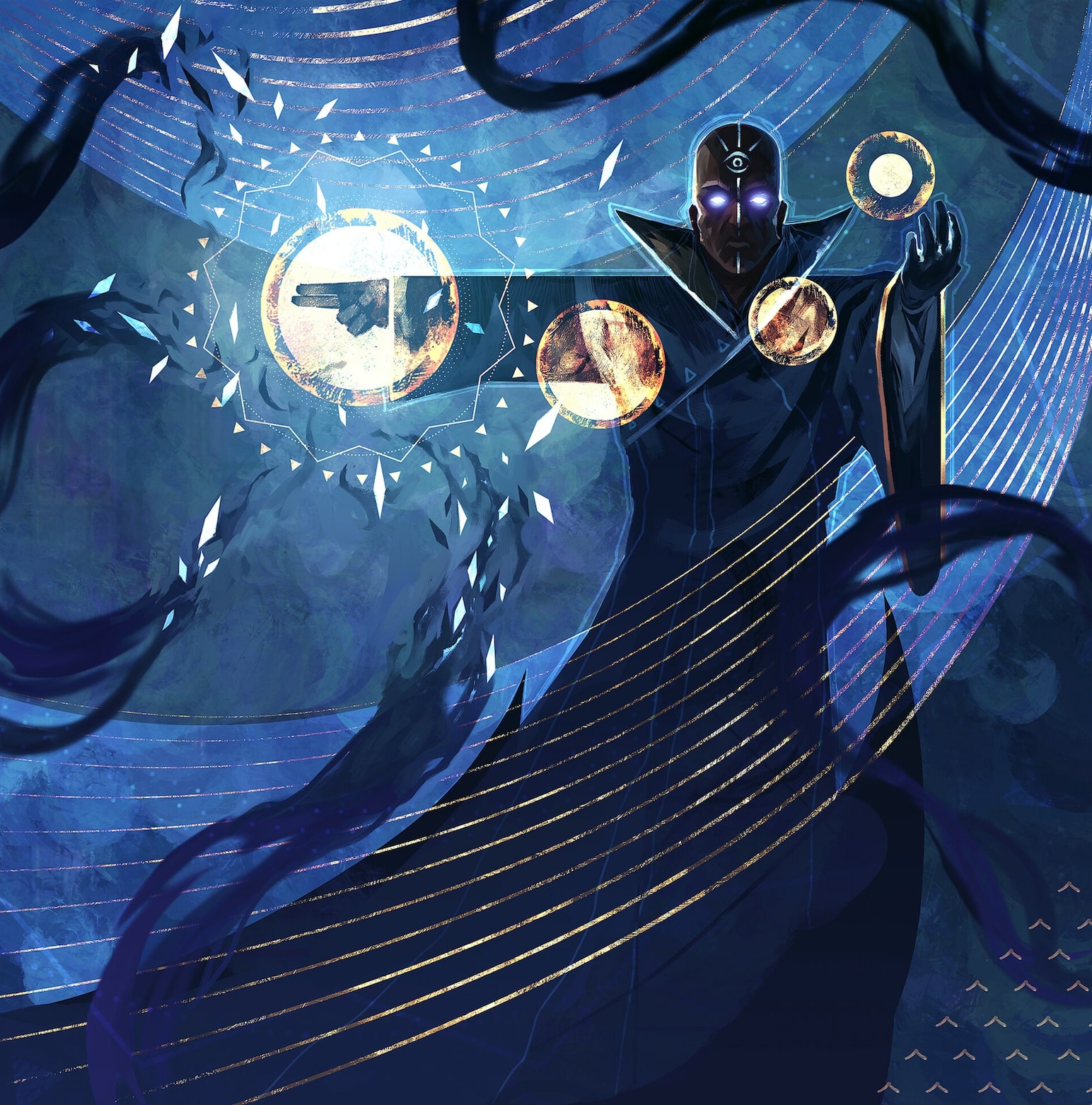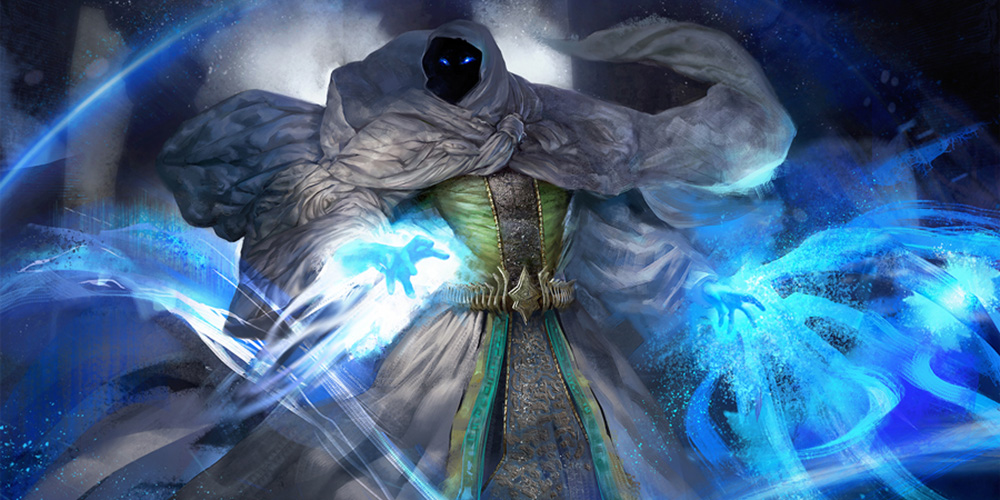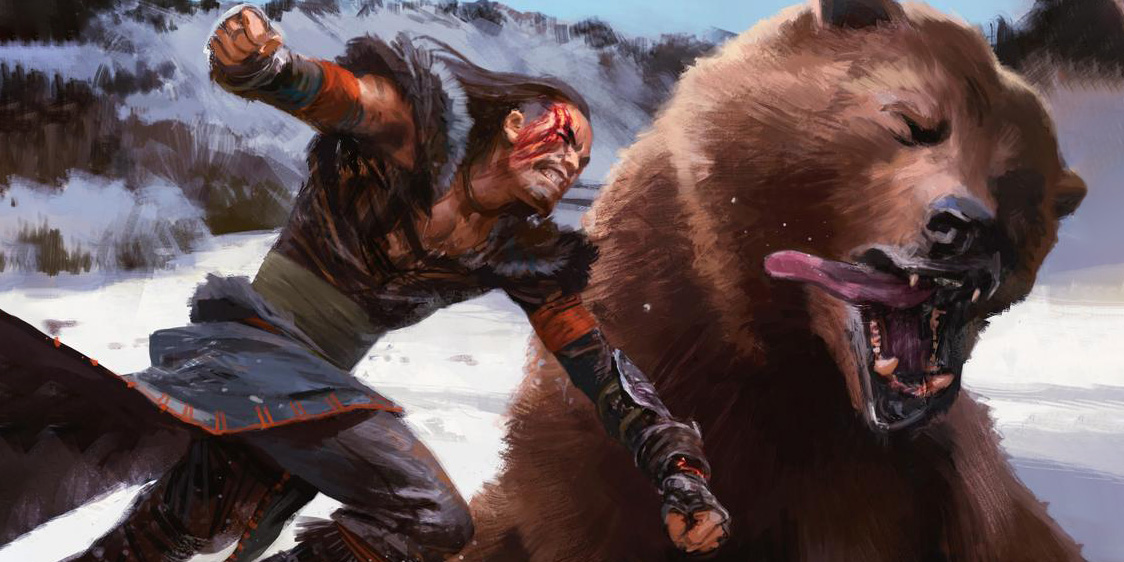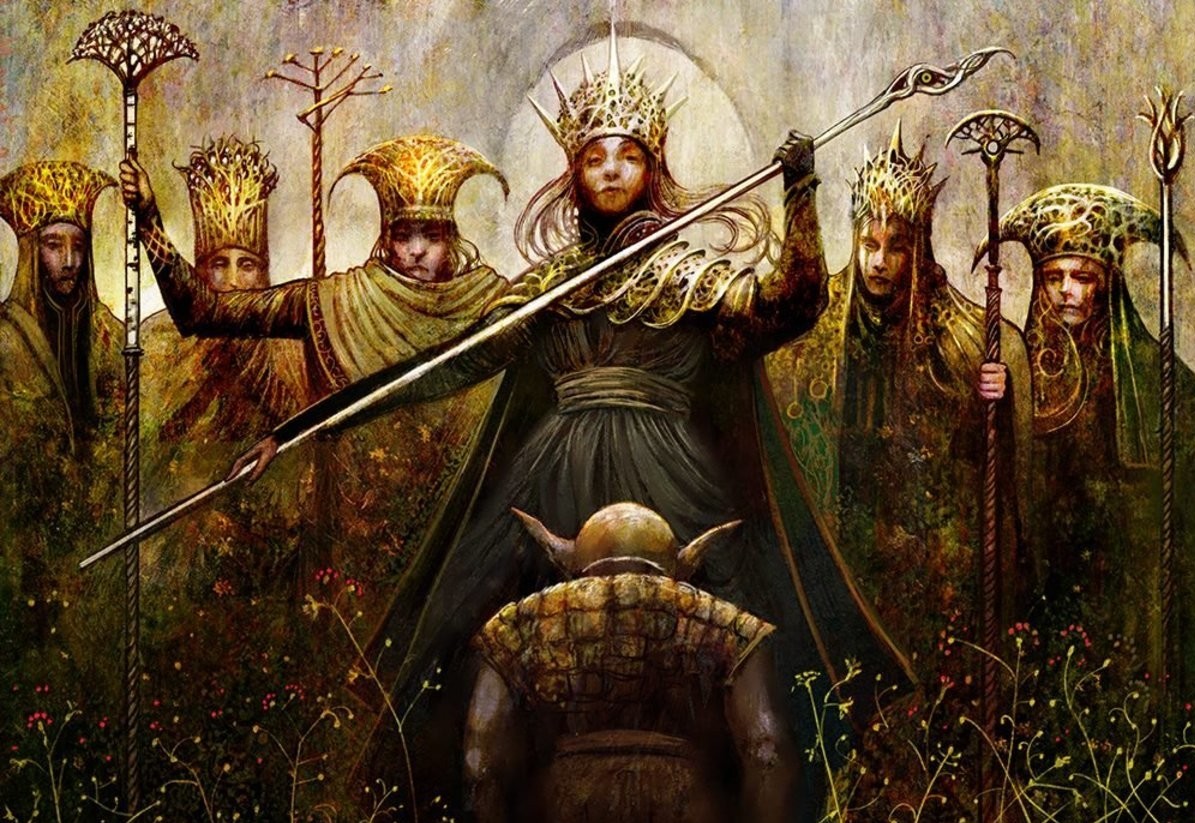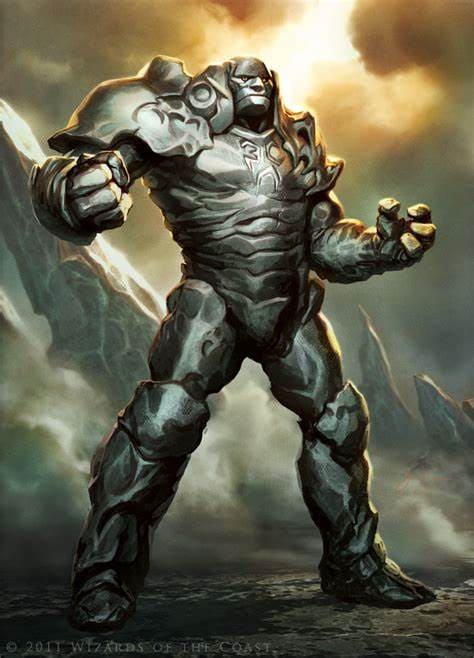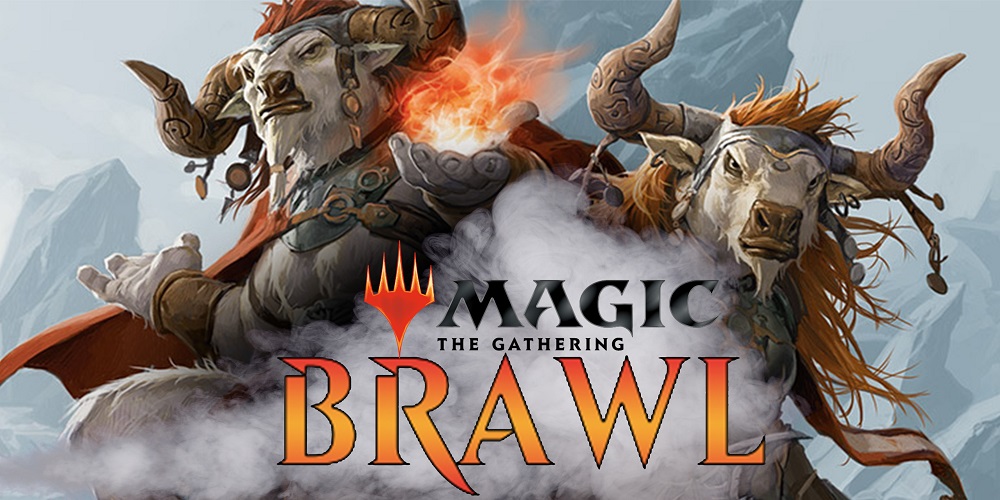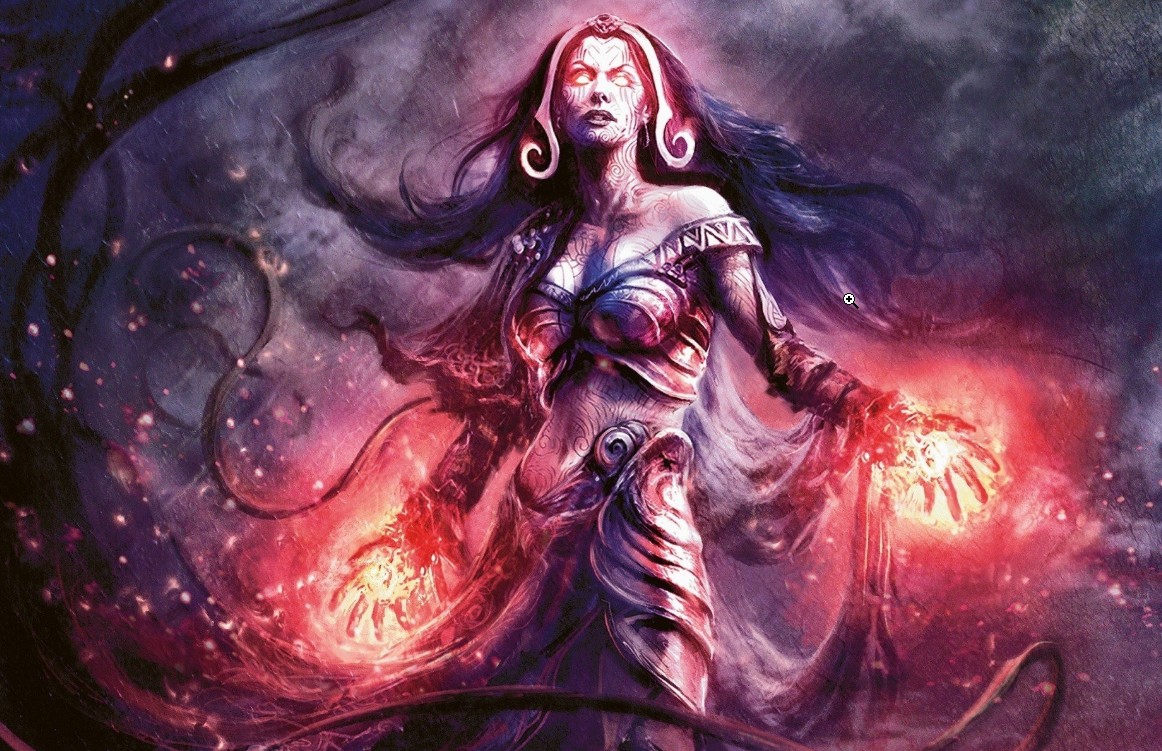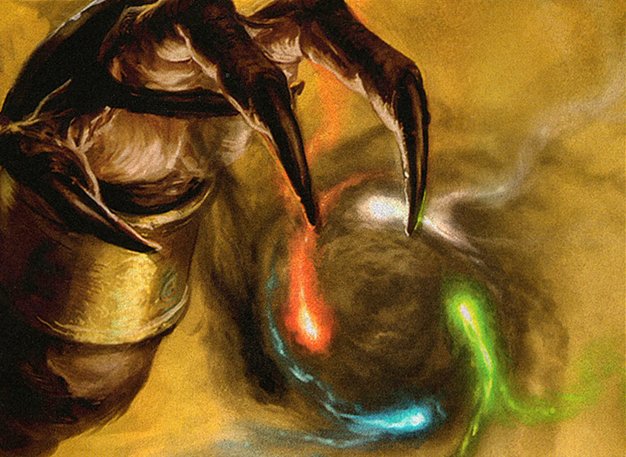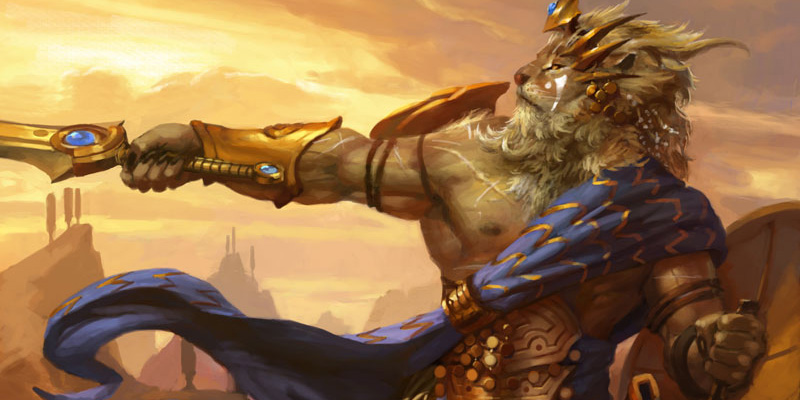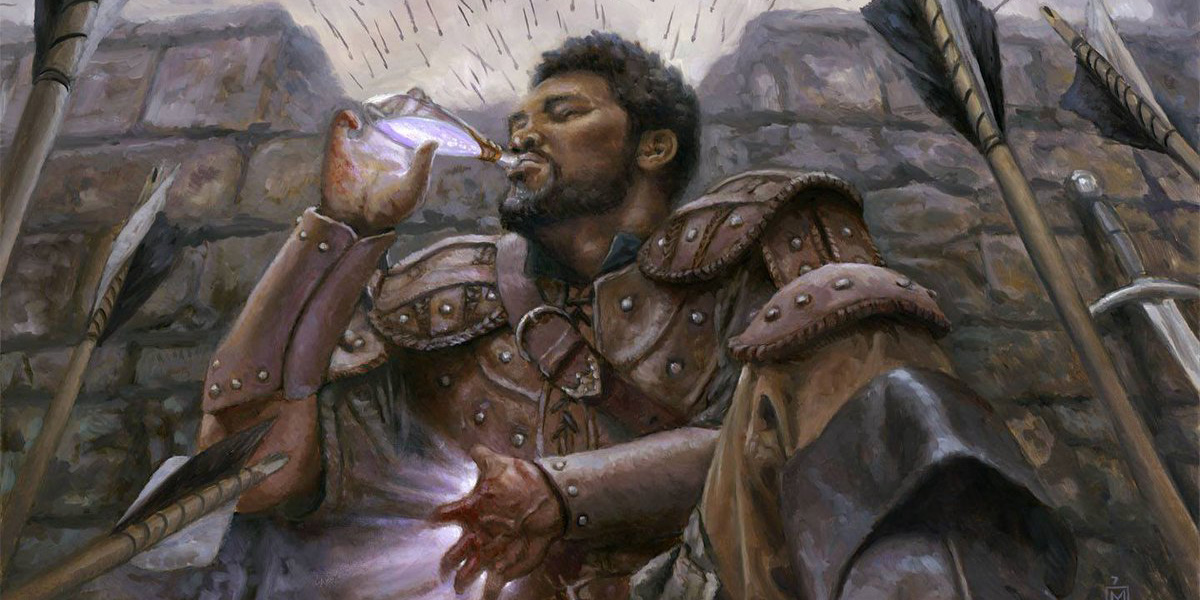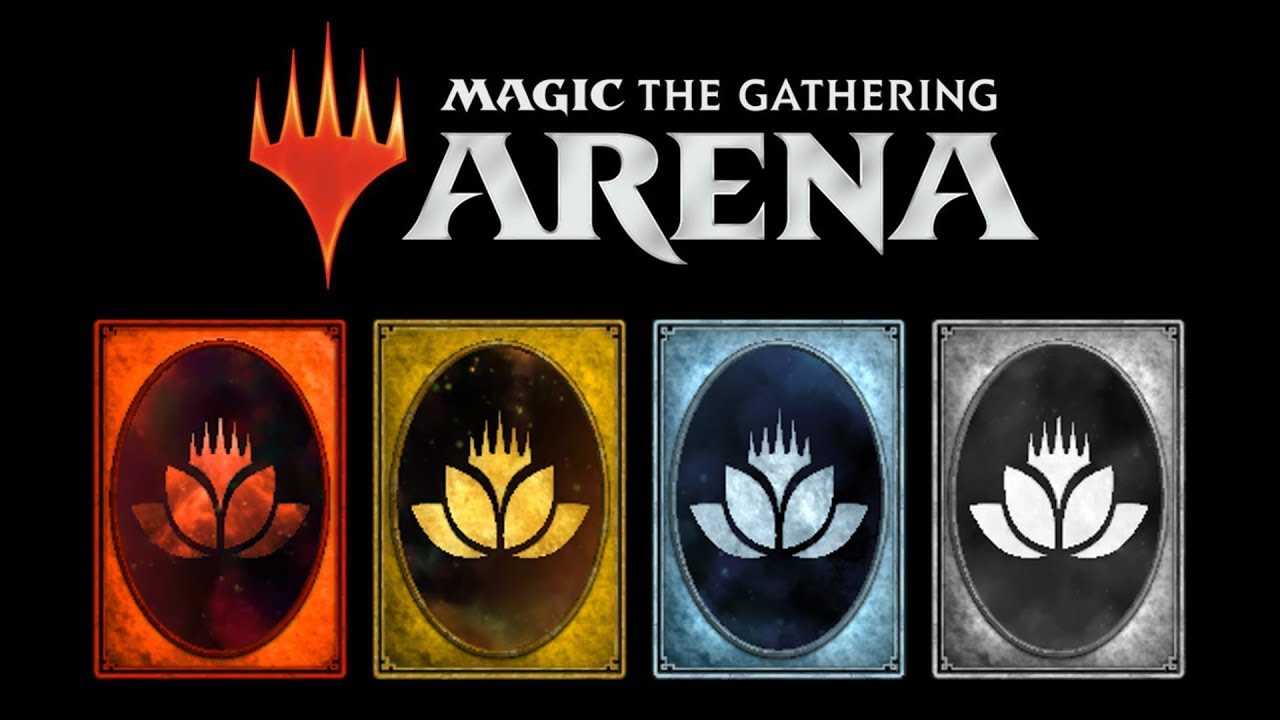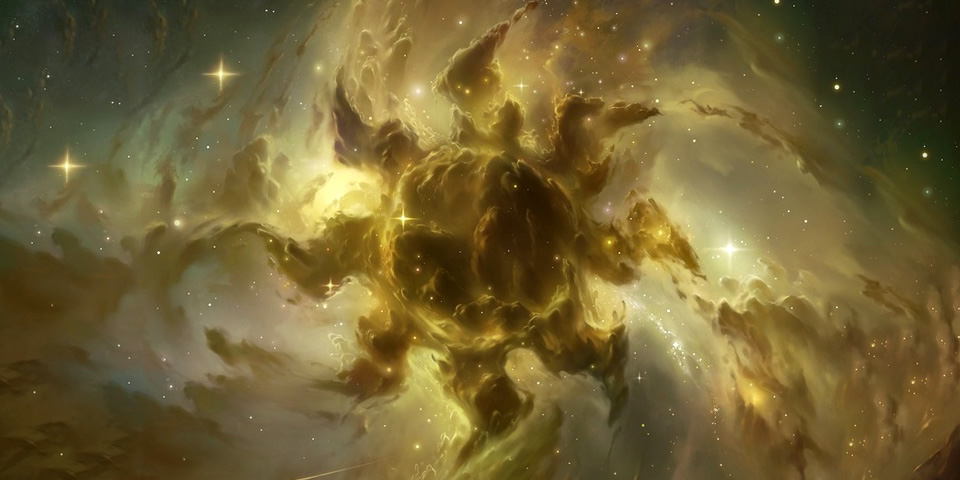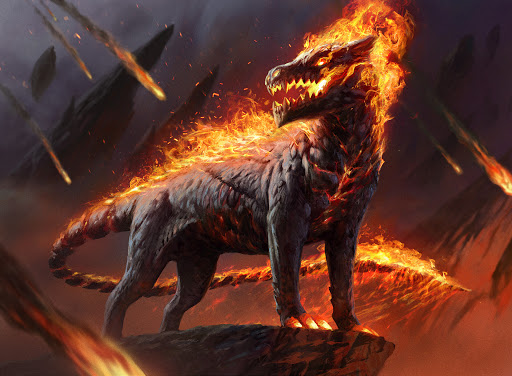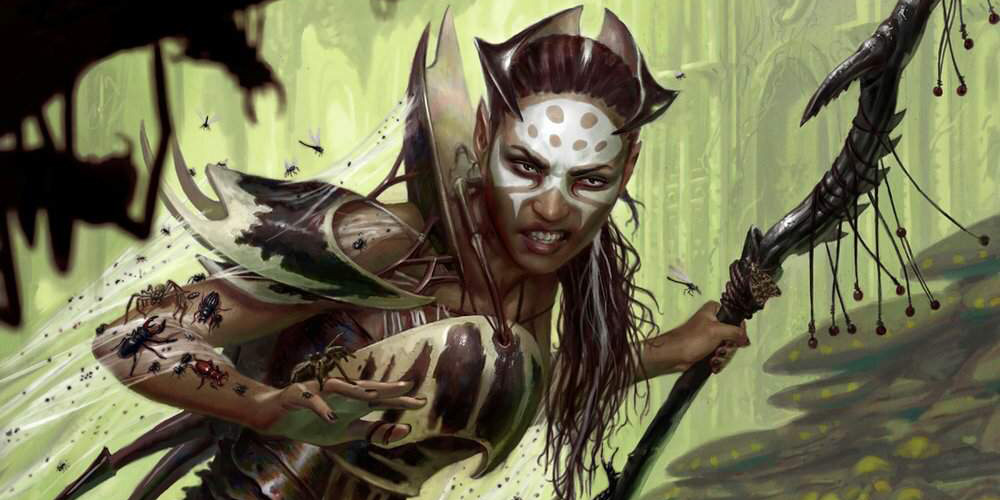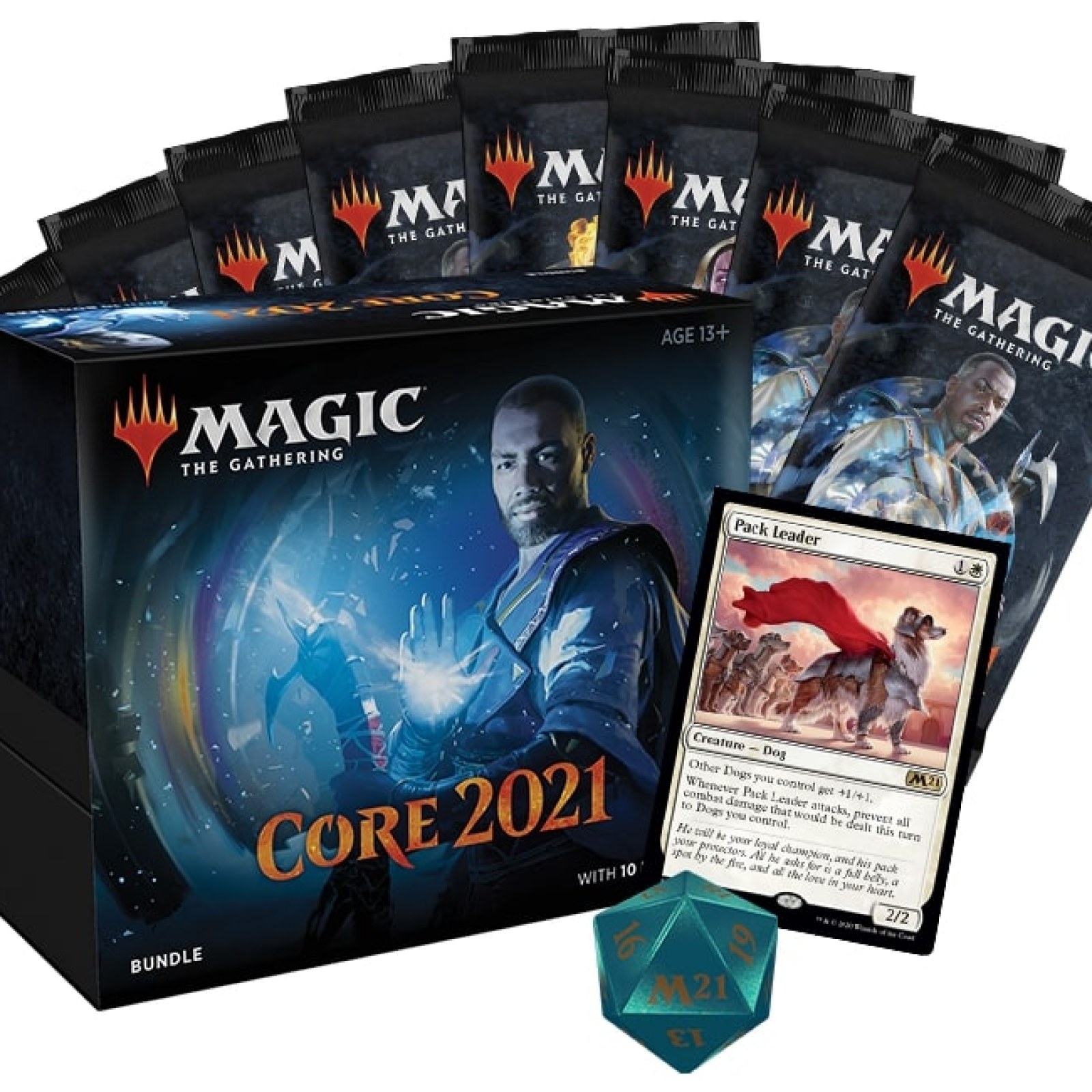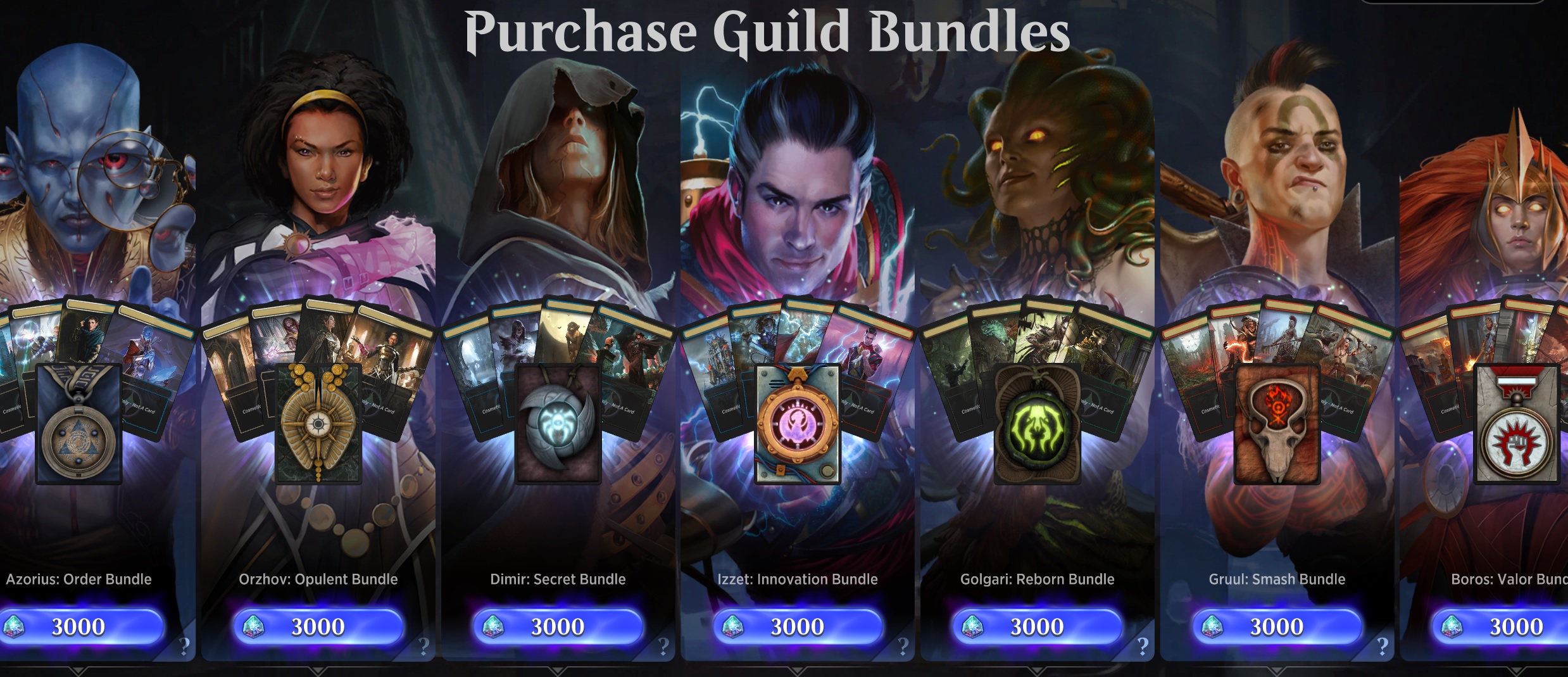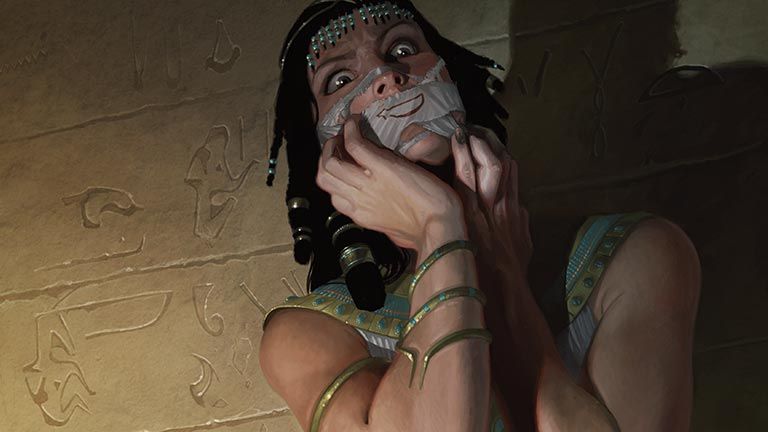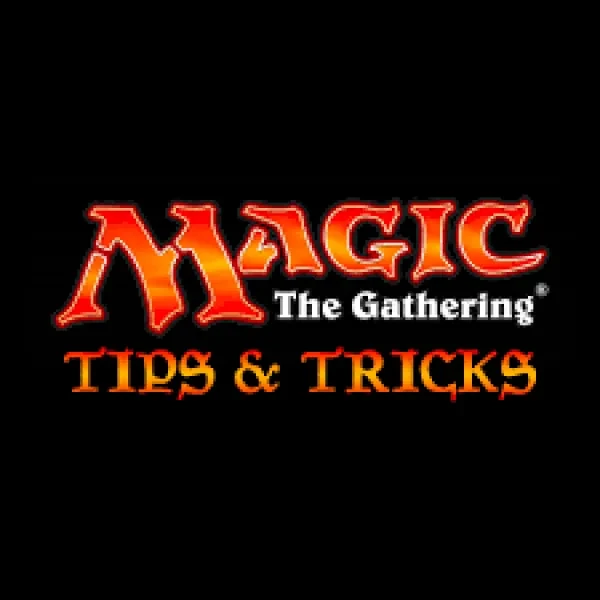
With the release of Throne of Eldraine and the recent rounds of Bans coming down the pipe soon, I figured it’s a good time for a starter guide. There's some things that may be difficult to grasp for newcomers from deck building to UI. I plan to cover and touch on at least a little bit of everything.
So without further ado, Let’s get into the meat and potatoes of this list, shall we?
50. Starter Tutorial Skip
Many people who are new to Magic the Gathering Arena have been playing the basic TCG (Trading Card Game) that they already know the basics of the game and just want to get to deck building and face smashing. While it might be better for players to just play through the Tutorial, WotC made it so you can skip the tutorial but it is kind of hidden and out of the way.
And luckily for you, there is a way to skip the Tutorial and still get all of the deck rewards. While you may be missing out on valuable gameplay experience you still each recieve of Mono Color Decks.
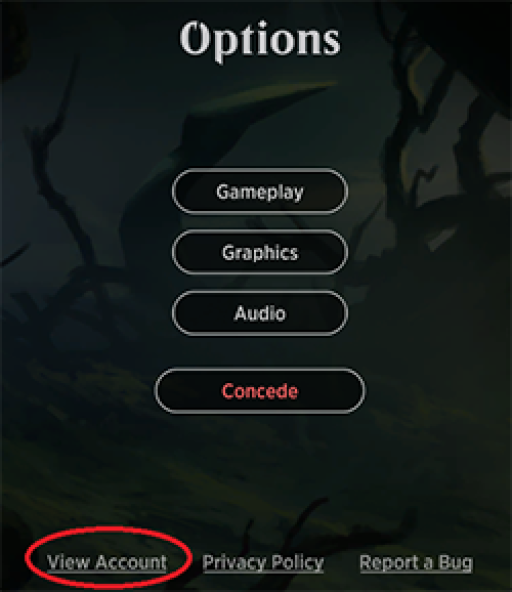
How to execute: You do this by opening the game options pressing the cogwheel in the top right corner, selecting "View Account" from the menu and then selecting Skip tutorial. It really is that simple.
49. Game Types
Probably one of the most complicated parts of the game, there are many games modes that are each used for different things. While all of them are part of the game and can be technically be played for free there are some nuances here that may that kind of difficult for a new player.
so I will try to break them down and give a slight description of each, and I will go more in depth with these when I talk about Free Play v.s. Paid Play.
How to execute:
- Play Matches you against an opponent using a deck with the same deck power you use.
- Bot Match Play vs one of the AI decks - Only rewards Account Mastery XP.
- Ranked Match Play against opponents of similar Constructed rank. Resets monthly.
- Ranked Drafts Play against opponents of similar Draft rank. Resets monthly.
- Traditional Play against a random player in the Best of three Constructed mode.
- Traditional Ranked Play against opponents of similar Constructed rank. Resets monthly.
- Traditional Draft Play against a random player in the Best of three Draft mode.
- Constructed Event Play in an event rewarding you for the number of wins you manage to get.
- Traditional Constructed Play in an event rewarding you for the number of wins you manage to get.
- Sealed Receive 6 Limited Booster packs, build a deck and get rewards based on number of wins
47. Rewards and Currency
MTGA has two types of currencies, one is free and given regularly as rewards, the other is gems. While many people look at these two and say “Well the only way to get Gems is to buy them.” Those people are actually wrong.
You can in MTGA trade Gold for Gems… To a degree, see the thing here is that the different games modes require either Gold or Gems to play, With some giving you a choice of the two to enter.
How to execute: The thing is, some events can be entered with Gold and reward you with Gems if you do good enough. Making it possible to convert gold into the premium gem currency. Both Gems and gold can be used for buying card packs, however, some events are locked behind a gem-only entry fee, these are events like Best of three Drafts and Sealed events.
46. Wild Cards
Probably one of my favorite parts of this game is the inclusion of Wild Cards. Wild cards come in four different types Common, Uncommon, Rare, and Mythic. Each of these are directly tied to a card rarity. Sadly you don't get very many of them.
The Wild cards allow you to trade, well a Wild Card, For a specific card of your choice of that rarity. Which as a long time TCG player is completely amazing.
How to execute: Wildcards can be found in booster packs, a wildcard progress wheel can be seen when you open a pack to show you when the next wildcard will appear. Speaking of opening packs that brings me to my next point.
45. The Vault
If you've been playing the game long enough you have probably noticed you can only have 4 copies of any given card, even cards that you can more of in a deck once you get four of them you just have the maximum allowed amount. So what happens to the rest of the copies you get from packs or rewards.
Well those guys go into The Vault. When you open your 5th and onward copy of any of these cards a hidden mechanism is triggered called the Vault system. The Vault is a hidden treasure box that fills itself slowly when you get 5th+ copies of a card.
When you draft and pick 5th copies of any card rarity, these also go towards the Vault progress. Except Rare and Mythics you will never get more than four copies of any of those.
How to execute: Then it reaches 100% you will see a treasure chest at the top of your screen inviting you to open it. Inside of it you will find 1 Mythic, 2 Rare and 3 Uncommon Wildcards. The Vault is hidden from the game and progress can not be seen unless you use an external tracker software (not recommended as this my very well get you Banned), read the local logs or use a trick where you do not open the Vault once it reaches 100% and instead wait until it reaches 200% and then open it.
This will make the Vault always be displayed.
44. Growing Your Collection
After completing the Tutorial you have earned one of each of the Mono Color Deck, but that's just the beginning, as you continue to play you earn multiple Dual Color Decks. After that things get more complicated.
So I am going to over the things you can do with your gold in order to earn the most cards, There are many YouTube videos that go over this in far more detail than I will.
How to execute:
- You can 1. Spend your hard earned 1000 gold to just buy a booster, not great but if you don't want to play competitive it's probably your best bet. I will take longer to get your collection to grow but you will get Wild Cards faster.
- 2) Join events like the Standard Constructed for 500 gold, however here it may not be great to earn cards and it will take 4 wins in order to get the 3 uncommon cards and 500 gold needed to earn back what you spent to get into the event. And lastly you could save up 5000 gold and enter the Ranked Draft where you select from rotating draft packs the cards selected here are permanently added to your collection you use these cards and lands to make a 40 card deck, earning Gems and up to two packs in place of gold and single cards.
43. Free V.s. Paid Play
Many people will be wondering why I’ve left out paid playing up to this point and that's because Paid Play is pretty similar to Free Play. The biggest difference comes down to whether or not you need to grind out the gold in order to get into Traditional Draft as that where things really come together.
Below I'm going to tell people how to get the most out of their Gold and Gems in order to really Grow their Collection.
How to execute:
So the main point here is that what you want to be doing to grow your collection is to be playing Traditional Draft. For Free Players, it's much more difficult to get into than it is for Paid Players. So, of course, you should start by deciding whether you want to play Draft, Or Constructed maybe you are just better at one than the other or have a personal biased, That's fine.
Either way, the end goal is the same Earn 5000 Gold so you can enter Ranked Draft, this is the only in game to turn your gold into Gems. By the time you are done you will need a whopping 1500 gems. This is the amount needed to enter Traditional Draft.
You want Traditional Draft because even if you don't make a single win you will still get the Draft cards and a pack. In addition, it only takes three wins in order to even out at 1500 gems and a respectable 3 packs regaining what you spent to get in and the two bonus packs. However, you should shoot the final place earning an amazing 2100 Gems and 6 packs for getting all 6 wins for a whopping estimated 105 cards for 1500 gems.
Whereas spending 1200 gems nets you six-packs and an estimated 42 cards some of those being Wild Cards.
42. Should I purchase the beginner's pack
After reading what is above you may be wondering if it's even worth buying anything since it can all be earned in-game, And that's valid. Of course, while it’s always up to you a one time fee of 4.99 is fair.
There are many layers to this question but generally the answer is yes. WotC worked hard on this and while some people complain about the Micro-Transactions
I feel it is fair for them to give the players who can afford it the option to buy things like packs and cosmetics.
How to execute:
Buying the beginners’ pack is as easy as going into the store clicking the offer and putting in your credit card information. Doing so will grant you a hefty sum of gold, Gems, some cosmetics and a few packs to start you off. If you have the disposable income I suggest everyone pick it up if for no other reason than to support an amazing game. In addition, it can help start you on the long grind to Traditional Draft.
41. Need to Know Before Using Wildcards
My friends ask me what cards they should spend their wild cards on, my answer is generally the same. Be strategic and don't just spend them willy nilly. Remember they are a resource that you can earn in the game but they are slow to get.
Save them for the card you need to play the decks you want. If you just want to play and dont care about being efficient just get whatever cards you want. However if you want to play to increase your collection. Well, that takes some more work and planning to get right.
How to execute:
My usual suggestion is to look at the top-ranking decks and find one or two that you want to use, and purchase the ones that will be most useful. Perhaps most useful means cards that can be used for both decks. Perhaps it means cards that are central to the deck you want to play, either way, be smart and plan ahead.
40. Deck Building Tips
Now that you understand how to get cards, and that saving Wildcards is a good thing. Let's talk about Deck Building, this one of my favorite things to do in MTG, Arena included.
Below I'll be talking about the general scaling of a deck I have broken this down to multiple easy to chew bites.
How to execute:
Start off by deciding what you want your deck to do.
Do you want to gain life, Look for things with the keyword Lifelink, Maybe you're looking to kill creatures even if your creatures aren't strong enough to kill them, Perhaps Deathtouch is what you're looking for. Maybe you want to deal damage to your opponent even your creatures get blocked, In that case, Trample is what you're looking for.
39. Keywords
Keywords maybe intimidating to a newcomer, they are after all just words that have a special meaning in Magic the Gathering. These keywords may seem vague at first.
So what I want you to know is the five main keywords and what colors they go with, Because each color has a keyword that goes with them. Once you know these keywords, What color they are connected to, and what those Keywords do. Note that since dozens of keywords in the game I will not be going over them here.
How to execute:
- Lifelink: Any damage your creature deals you will gain as life, Lifelink is generally associated with white. Also associated with white is Vigilance.
- Deathtouch: If your creature deals any damage to an opponent creature that creature dies even if damage would not have been enough to outright kill it. Deathtouch is commonly associated with Black, as is the Keyword Menace.
- Trample: Any damage left over after your creature kills the opponent's creature is carried over to the enemy directly. Trample is mainly given to Green, Reach is also commonly given to green.
- Haste: Your creature does not come into the battlefield with summoning sickness this means they can tap or attack on the same turn they come out, Haste is Common on red cards. Red is also usually set to deal damage to opponents creatures with instants and sorceries.
- Flying: Flying pretty straight forward creatures with flying can only be blocked by other creatures with flying or Reach. Flying is common in Blue, While all colors have flying Blue seems to have the most. Blue is also the most disliked color mainly because it’s suggested by many that “Blue is the color you play, when you don't want your enemy to play it with you.” They're not wrong, Blue focuses on countering enemy cards and bouncing their creatures back to their hand.
38. Rare cards make the games go round
Realistically Rare Wildcards will be the biggest bottleneck for making your deck run smoothly and efficiently. Rare cards are where you will typically run out of Wildcards, seeing as you will typically one have one or two mythics in a given deck and those are typically just alternate win conditions.
Rare cards will usually pieces to your deck they can make or break it. Too many rare cards and you won't be able to pay for all of them with Wildcards, not enough of the right ones your deck just will not function.
How to execute:
As mentioned earlier, save your wildcards until you're sure of what cards you want. This is the biggest hurdle you'll have for just about everything from grinding gold to having a working smooth working deck. So it is often best to find a high rank deck remake it to the best of your abilities, and then just modify it to fit your playing preferences.
37. Banned Cards
At the beginning of this list I mentioned that there are bans coming down the pipe for MTG A and MTG in general. These cards are often too powerful or downright broken. The biggest reason for this is that players think of combos that Developers just don't.
So there is an Online resource where you can find the list of banned and limited cards. So I will add in a link to a page on the website with a list of all banned and limited cards keep these in mind when building a deck.
How to execute:
https://magic.wizards.com/en/game-info/gameplay/rules-and-formats/banned-restricted
This page is the official location of all banned and limited cards in all formats. Stay away from the Land of the Dead, and you'll be pretty safe in standard.
36. Know the Meta
Knowledge is a powerful weapon, knowing the likelihood of your opponents decks based off of player rank and colors, is important for playing around what they are playing. Many decks are hard to counter properly without this knowledge. But don't fear as everything with Magic the gathering an astute mind and a keen memory can save your life points.
What this means is if you want to play competitively you'll need to know what you're up against. There are ways to find this out though, and it is surprisingly easy to become associated with.
How to execute:
Watch streamers and YouTubers, they will often tell you what they are thinking as they play and by watching the opponents decks you can typically see what other people are playing and how to counter them. I suggest Merchant, He’s easy to listen to and is a personal favorite of mine, followed by Mogwai just because he can funny at times.
35. Deck Building 101
Now you've looked through the top ranking decks and didn't find anything you wanted to play, so you want to make your own deck. That's fine, you should have an idea of what you want the deck to do, or you should, if not go back to number 39 and take some time to find a theme. Maybe you want to play goblin Tribal and that's great, or Rakdos Burn, that's Black/Red with a focus on slamming your enemies and killing your enemies creatures with spells that deal damage, and life point total directly.
It can be intimidating building your deck from scratch, But dont worry im here to help break things down for you. It's only intimidating the first few times, or when you dive in headfirst. So there are three major parts to deck your land are the most important you can't play anything if you aint the mana to pay for the spells, creatures are one of the most basic ways to defend yourself and deal damage to your opponent, And your instants and sorceries these are how you support your creatures and are another way to defend yourself.
How to execute:
These three types of things need a medium in your deck, The first two-thirds of your deck should be a rough one-third split between your creatures instants and sorceries. Now that you have done that it's suggested that you finish off with the last one-third of the deck being land, these to be a rough split between whatever colors you are going to be playing. In MTG Arena you can actually ignore the last part to a degree because you can have the auto suggest lands for you. In doing so the add 23 lands in whatever combinations are best for your deck in BASIC land cards.
34. Stepping Up your Deck Building and Curving Out
After you play a few games you'll probably notice that the deck you built can use some work. Maybe your creatures are too expensive to cast when you draw them, or perhaps there's just something missing. Well in this section I'm going to talk about smaller nuances that I didn't go over before.
Including the mana curve and some of the types of cards in the game. Things such as mana curve, Artifacts, Enchantments and planeswalkers can make your deck go from something is missing to great. All of these have one major thing in common and that is that they may not have been on your radar when originally making your deck.
Mana curve is the term used for the land to cost ratio of your opening hand. Artifacts and Enchantments are effects that stay on the field, that can offer incredibly powerful effects that are persistent. Planeswalkers are cards that have their zone on the field have something called loyalty counters, when those reach zero it dies, however some abilities will add loyalty counters and some will remove them.
How to execute:
For the Mana curve you'll need a minimum of three lands in your opening hand and 1 cost 2 cost and 3 cost card the other card can either be a fourth land or a 4 cost creature, This what's known as “curving out”. Don't be afraid to change up your deck build after you set it up, your deck is never set in stone. Even before new sets come out you can constantly be changing and molding your deck into something great.
33. The Sideboard
This is for best three matches, The Sideboard allows for you deck to be switched on the fly between matches and cards that say things like “from outside of the game” are talking about this very important piece of your deck.
The sideboard allows you to customize your deck against specific types of strategies in best of three matches or to overpower your opponent in best of ones. By pulling cards from your deck between matches you can add more counter cards or perhaps the best thing to do is just add more kill spells, or perhaps you noticed that the enemy deck just isn't running strong counters so you add in some very heavy hitters.
How to execute:
While you're building your deck you can look next to the deck box you'll see a tab labeled Sideboard. Using this tab allows you to add fifteen cards to your deck without being directly in your deck. What this allows for is deeper customization, perhaps even flipping your opponent on their head when you sideboard in an entirely new color into the deck that wasn't there before.
Be Careful not to fall into the “Uber creature Sideboard” trap this is something new players and even intermediate players fall for, where instead of adding utility to the Sideboard they just add 5-6-7drops and expect everything to work out fine in some cases, yes it will, but overall... Well, there's a reason it's called a trap.
32. Easy Splitting Attackers
Magic the Gathering Arena seems to want you to choose one attacker at a time or mass attack. But sometimes you want to choose to strike out at multiple separate targets such as Planeswalkers.
You're in luck, it is possible to choose multiple cards for an attack group.
How to execute: Simply click multiple cards and then choose your target either the opponent or one of their Planeswalkers, Then repeat with different targets.
31. Mass attack with one click without attacking with all creatures
In token decks or decks where you have multiple of the same cards regularly sometimes you don't want to just attack with all of them, But you also don't want to click on the card one at a time.
A similar thing can be done when selecting attackers in a much larger group, only slightly different.
How to execute:
When you have multiple of the same card you can just select the X# symbol next to the cards, and select a target.
30. Multiple defenders
Selecting multiple blockers to aim at one target can be annoying and when choosing mass blockers you may start running out of time. And that's bad.
Luckily again, I got you covered. I understand how annoying and time consuming it can be to choose multiple creatures to block one creature.
How to execute: Luckily it works the same way for blocking select multiple creatures than the target you want to block. This dramatically decreases time and helps against big creatures or trample in general.
29. Manual Mana Select
A huge help is the auto land select in this game, by reading what's in your hand and what you want to play the game tries the lands to best suit the situation. The problem is that they don't always get it right often times selecting a dual land when you needed to keep it open for a move you plan to two or three cards from now on.
While you can turn this off. You don't NEED to turn it off. There's other ways to take care of that
How to execute:
By selecting what lands you want to tap ahead of time, you have the power over what lands and mana are used for that card.
28. Mastery and the Pass
These go up all the way to level 72 providing you with a total of 36 boosters each season. While the level system goes up all the way to level 100 the Base Set Mastery does not provide any rewards for reaching the higher levels.
The Mastery Pass is the premium track that goes hand in hand with the Set Mastery providing additional rewards for each level you reach all the way up to level 100. The Mastery pass can be acquired for 3.400 gems.
How to execute:
Buying the Mastery Pass will cost a whopping 3,400 Gems that's a whopping 20 dollars and provides players with a nice extra reward track depending on how much they play.
27. The Mastery Tree
Account Mastery is what players refer to as "The New Player experience". It is meant for beginners of the game to earn rewards all of which are animated card styles. Allowing you to flex on people with styles.
As you gain set mastery you'll unlock something called Orbs. These can be “slotted” into the tree to unlock mastery styles.
How to execute:
Getting to the tree is as simple as a few clicks of a button, head up to the mastery tab, then select “button” labeled Mastery Tree. Then selecting the first node its that simple, done and done.
26. Emoting
Is your opponent taking too long to make a move, Did they just surprise you with a move they did, Are you taking a while to make a move. Sadly getting all of that across can be difficult. And complex thoughts are impossible to convey.
Sadly Emoting is really the only way to convey any thoughts and only simple ones can be conveyed this way.
How to execute:
Simply click your avatar and select the message you want to convey.
25. Counter Emote
On the flip side the opposite may be true as well. Perhaps they are getting annoying with their Emotes.
MUTE THEM. Seriously though it might be a good thing to mute them.
How to execute:
By clicking their avatar you can Mute them making it so that their Emotes won't show up anymore. You can reactivate their emotes by repeating the process
24. Deck Building Search
The search function is actually incredibly in-depth. With the builder search there are thousands of terms you can use to find the exact type of cards you want ranging from power, and toughness, to keywords, to specific term strings.
If you are unsure what card you want to find but know the kind of thing it is good for or does you can find it, An example would be: “Lifelink Power>5 Color=White” this would show you all cards that are White Lifelink with a power greater than 5
How to execute:
Searching the internet will give you a large sample of what terms you can use. Use them to limit your search or greatly expand it.
23. Wildcard Frequency
It becomes problematic not knowing when you will get your card and any given type. While you can get them if you're lucky from opening packs. But finding you need more is problematic.
Luckily you are guaranteed Wildcards of a certain type at certain points.
How to execute:
The gathering of wildcards at 6-1 uncommon and common with uncommon appearing in around a 3-1 ratio compared to common, and 8-1 rare and mythic rare, HOWEVER, rares tends to appear on the wheel at 4-1 compared to mythic.
22. Experience
Those little circles at the bottom of your screen on the main page are kind of like quests. You can technically have up to three queued up at any given time, a lot of the places on the internet will tell you that you can reroll these quests but I haven't been able to for a while. I am unsure if this because it has been bugged for me, or if they removed that ability because people were abusing it.
These quests come in a few forms cast a certain amount of spells, kill a certain amount of creatures, deal a certain amount of damage, play specific color, or get a certain amount of wins. The rewards all be worth a certain amount of experience and either 100, 250, 500, or 750 gold.
How to execute:
After you have completed the first three quests in a given day. One will respawn each day thereafter up to 3. The fourth one resets every Sunday, and has many quests in the circle that will automatically replace it one after another until complete. This experience is what is used for the Set Mastery with each one costing 1000 experience, every other level will grant you a booster pack up to level 72 or 100 if you have bought The Mastery Pass.
21. Food and water
There's no need to overexert yourself. People have had physical health issues attributed to video game “Marathons.” Your health is important, You are important.
Remember your health is more important than any video game. Food and Drinks are essential for you to stay at peak physical and mental shape.
How to execute:
Set a timer and grab some food and drink. It's easy to fix this problem this actually leads to my next Tip.
20. Don't Forget to Rest
You may already know but eye strain can be a problem looking at your computer for too long. Its is recommended that every hour you take a 10 minute break.
A person needs a chance to relax eyes eye strain is painful and can cause headaches and the like. Just remember that the game is not more important than your own health.
How to execute:
As mentioned before Set an alarm every hour and take a 10 minute break get up walk around stretch your legs and grab a snack. Don't forget to hydrate.
19. Beginner Decks
So before we part I wanted to add some more information about beginner decks. As they can be incredibly difficult to seek and search out without some direction.
So the problem is knowing where to look and what to look for. This is pretty easily remedied by searching on google a few specific key terms. Below is a list of those.
How to execute:
Magic the Gathering Arena (insert name of newest set) Beginner Decks, Strong Starter Decks MTGA, terms such as these will to groups who help build decks with export features, such as eatherhub.
18. Import/ Export
So you've found a deck you want to copy but you don't want to go by card by card, by card. But the people over at WotC have even thought of that.
This not only helps save time for you but you can use the same trick to Export your lists for other people to use
How to execute:
Simply go to a website like either hub find a deck you want, hit “Export” tab above the spell list, then click Import in game be careful doing this there used to be a bug that would automatically use your wild cards on import, and I'm unsure if this ever got fixed.
17. Watch the Pros play
Eventually, you'll want to get better at the game, almost everyone does, and that's fine. The problem is not many people know how to get better. They just keep doing the same thing again, and again and expecting a different outcome. But that's the definition of insanity
The best way I’ve found to get better, is to watch people play the game. But that may be difficult for some. But there are plenty of resources out there for people who care to take the time to try to step up their game.
How to execute:
Whether it is on youtube, twitch, or just sitting down at the local card shop and watching people play. Some MPL players seem to know their deck and the opponents inside and out.
16. Have Fun
This is a game first and foremost if you start taking it too seriously you'll start to feel dismayed with losses which sadly do happen, And that's fine. Losing is a normal part of the game, but admittedly no one likes to lose. Keeping yourself calm and cool is important. Even more so however is just enjoying the game.
Getting burnt out on a game so badly that you just refuse to touch it does suck however, by simply allowing yourself time you can come back to it with fresh eyes.
How to execute:
If you feel that anger and rage building up, maybe step away from the game for a few hours. When you come back and play your favorite deck a few times, maybe your favorite deck doesn't win often but it is really fun to play.
15. Build a Deck JUST FOR FUN
Not having fun in this game sucks so I suggest well, have fun. This tip carries down from the one above it, but I felt it warranted its own number. Build a deck that's just for fun that you don't necessarily expect a lot of wins but is just great to dive into unranked and mess around with. For me that deck is Mono Blue persistent partitioners- control.
Making a deck that is just fun but you don't expect wins with really lowers expectations, and makes it so that when you do win is a great surprise.
How to execute:
Just build the funnest deck you can and don't worry about wins.
The next section of tips will be about the color wheel
14. The Colors
Many people who are just beginning seem to a fundamental part of the game, That being the different types of Mana and they specialize in and stand for. Knowing this is incredibly important because it allows you to hazard a guess at what the opponent's deck is built around and it may be very good at doing and what it may be lacking in.
Below I'm going to cover a quick basis of each mana color and it's known for. After that, I'll be going more in-depth on each color and some of the Planeswalkers that exemplify that color
How to execute:
- Red: red is the color of rage fury unbridled emotion in all forms. Known for its amazing and cheap burn spells and creatures that can attack the same turn come out. One of if not the most aggressive color in the wheel.
- White: Faith, Justice, Perseverance, and Honor, White is the color of the pure and righteous, known for Angels, Lifelink and, battlefield control, People who play tend to be slow to start but quickly get out of hand if not kept on a leash as it were.
- Blue: Blue is the color of intelligence,Cunning, Illusions, and Guill. Blue is known for deck and hand control all while using removal spells to keep you from stopping them when the time comes to execute their meticulously crafted plan.
- Black: black is the color of Greed, Pain, Loathing, and Death. Black cards tend to revolve around Deck and Graveyard play. Sacrificing a creature to summon large demons that while very strong have incredible cutbacks. Black is a color that those who want to make the enemy suffer play. With Deathtouch creatures And 3 drop kill spells like murder. Black is a force to be reckoned with, and that's before we bring out the creatures of the night to haunt and stalk your prey.
- Green: Green is the color of Strength, Power, Nature, and the beauty of the cruelty it brings. Green is about getting out the biggest creatures and stomping through front lines. Green is known for its huge creatures and combat tricks.
13. Red
Red is about fast and dirty play. Spells that deal damage to single, any, or all targets are usually the domain of Red. It exemplifies the best defense is to let them mount an offense. Sadly red tends to run out of steam quickly if you're not careful.
Knowing how red plays is as simple as looking to history and looking at the germans they coined the term Blitzkrieg literally translating to lightning war. It was about getting into enemy territory and tearing things up. That is what red does with Haste creatures that can attack the same turn they come out. Chandra Nalaar is the consummate red Planeswalker and she has an attitude to match the color she draws power from.
How to execute:
Playing red is about killing the enemy creatures and then swinging in on them. Mass damage is the name of the game here you want to out number them, then hit from as many angles as possible all while your kill spells are at their throat.
12. White
White about slow and steady control. The game will usually include Lifegain, +1/+1 Counters, Tokens, And spells that make your creature unable to attack or defend. ALL of that in the first five or so rounds. After that expect Flying Angels and More Lifelink. Knights, Cats, Angels, Spirits, Knights, and Vampires will allow the White player to serve all of the Justice they think you deserve.
With spells like Luminous Bonds, Eternal Isolation. White has some of the best and most frustrating battlefield control in the game. Gideon Jura is the White Planeswalker I want to talk about, Able to do things give out indestructible to fellow creatures add counters and become a Creature himself. This PlanesWalker is a force to be reckoned with.
How to execute:
Playing White is about slow and steady control. Control the battlefield with creature effects Lifegain and Spells until you can bring out your heavy hitters. Then rain Justice down on the head of your enemies. Almost if not all Angels will have flying and either Vigilance or Lifelink. Remember that the battlefield demands order and you are the one to deliver it, usually on wings of light.
11. Blue
My personal favorite color. Blue is about control before the cards hit the battlefield they will counter your cards, bounce them back to your hand, make you discard, then exile those cards from your graveyard. Blue likes to take a more planned and strategic approach to the game than many of the other colors. Nothing is safe from blue not your hand, not your deck, the battlefield, or the graveyard.
Blue is about playing cards on your opponent's turn instants and flash creatures are the name of the game here. The more Islands you have untapped the less likely your enemy is to attack into you. Jace Beleren is THE Blue planeswalker many of his cards do things like draw extra cards, send cards straight from the library to the graveyard, Look at your opponent's hand and force them to discard. Jace is the big-brained mind mage, you should play him as such.
How to execute:
Really playing Blue is about not letting your enemy play the game. Counter their spells. Force them to discard if they have no cards in their hand, go after their library. Nothing is safe from a Blue player and most other players know this, You can regularly bluff having something to play just by having cards in your hand and a ton of mana left over on their turn.
10. Black
Black is about greed, death, slow poisons, and quick poisons. They will usually have more interaction with their graveyard than the other colors. They will not be afraid to sacrifice their own creatures for benefits. Many black decks will have cards that do things like deal damage to an enemy when one of your creatures dies, sacrifice creatures for life or to kill other creatures.
Black IS going to try to kill you. With things like Deathtouch, even their big guys will die swinging in on you. Liliana Vess is the Planeswalker who embodies black the most. She will send things to graveyard create zombies, swarm you with an army of undeath. Then laugh in your face while you die an excruciatingly painful death.
How to execute:
Playing black is about using your graveyard as an extra hand, your life points are just another means to an end. As are your creatures and preferably your opponent's creature take control of their creatures then sacrifice them. Create an army of darkness with vampires, zombies, monstrosities, skeletons, And demons then lay waste to any who are foolish enough to stand against you. If that doesn't work kill your creatures to deal damage to your enemy directly. Remember that your creatures are just as much a resource as the blood of your enemy.
9. Green
Green is about pulling out the big creatures to lay waste to your enemy. You want Mana ramp so you get your big things faster with cards like rabid bite you can force your creature to deal damage to your enemies creatures outside of combat, use aura enchantments to buff your weaker creatures.
You will be wanting to get out either an army of small guys or an army of big guys. Either way you want threats use you big guys to threaten their ranks. Then threaten the enemy. Nissa Revane is the green Planeswalker who best embodies green currently. She gives you mana ramp or perhaps she will turn your lands into creatures so you can swarm your enemy.
How to execute:
Playing Green is about stalling until you smash them either with a huge army. Or an army of huge guys. Use things like reach and plummet to your advantage, Hit them hard and hit them fast. Mana ramp is your friend you want to try to be at least 3 drops ahead of the curve with most green deck this can through the use of creatures, artifacts, or enchantments. Remember that nature is cruel and unforgiving and you are nature incarnate.
8. The Guilds The First five
There are five main Guilds that are all dual color Guilds that you should know we often refer to these as the first five, or the prime five. And while it may seem like a tall order to understand them all, I'm here to help. Each guild in Ravnica has its own unique personality, and they're pretty easy to tell apart once you get to know them a little.
So since we are still working on colors here ill break down the first five guilds and we can work on you understanding them. Knowing them may well be the difference between a win and a loss.
How to execute:
Understanding the five guilds is as knowing their names color associations and what the guild stands for this will lead to an understanding of what the cards tend to do.
- Boros: The Red/ White militaristic peacekeepers of Ravnica. They focus on an ability called Battalion attacking creatures with this ability attack with 2 or more creatures great things can happen.
- Selesnya: The Green/ White value collectivist ideals and the natural world above all else, believing that the best path to peace and happiness is through unity, togetherness, and preservation. Focuses on beasts and tokens, adding abilities like vigilance to the tokens. Populate is their ability allowing them to create a token of a token they control.
- Golgari: The Green/ Black values the balance between life and death above all else. They embrace this messy and endless cycle of creation and destruction. They use the ability Undergrowth to get stronger the more cards are in the graveyard
- Izzet: This Red/ Blue value invention and discovery above all else, though they rarely have the patience for prolonged experimentation. They use Overload, an ability that lets them take single target spells and turn them into mass target spells.
- Dimir: Is the Blue/ Black value deception and manipulation above all else, and the guild's secrecy was so important to its founders that it was even codified into the original guildpact. They focus on stacking the deck with the use of an ability called surveil.
7. Boros
Battalion is great in the early game when they swing with a lot of creatures and have to worry too much about being blocked. This can be hard to deal with early game.
It's pretty to deal with Boros come mid-game, limit the amount of creatures they have on the field so they can't attack with 3 creatures without serious repercussions.
How to execute:
Cheap, fast, aggressive creatures. Boros likes to overwhelm with numbers, playing into their Battalion mechanic's theme, but this means they often can't get past a large threat in the mid-game. So try to get out a few big blockers and use some spells to kill off their creatures with Battalion
6. Selesnya
They want a lot of small creatures and tokens things that are easily replaced, and a few big guys that can pump up the smaller guys.
The best bet is mass wiping them, however, this may still leave their bigger threats in place depending on what you used. Targeted spells are great for killing key creatures enchantment or artifacts. A wide range of kills are almost necessary when dealing with selesnya.
How to execute:
A blend of going big and going numerous, Selesnya likes to make multiple large threats that can block and attack through anything. They can play a very long game with the Populate mechanic. Board wipes are your best bet against these guys, the second-best bet is to target their key cards, ones that can either populate or just create tokens whenever.
5. Dimir
Dimir is a difficult guild to understand. It has two primary ways to win, milling or evasive creatures. However, there is a limited supply of both of those cards, making it difficult to draft or build.
Killing key cards will make this match up much easier. Kill things that they have put their ciphers on. Target their unblockables with kill spells. Worry about your had size relative to theirs, since they are in blue they may have an answer for anything you throw at them.
How to execute:
Dimir can bury you with card advantage by keeping your creatures dead and hitting with creatures with Cipher spells, gaining insurmountable card advantage in the mid- and late-game. Dimir has trouble finding enough quality playables to have a working strategy, but can be devastating when they do. Kill the creatures they seem to baby the most be careful if the start to pump unblockable creatures that may just toll your demise.
4. Izzet
Definitely the cleverest guild, Izzet attacks opponents on multiple axes until deciding the best way to win. Izzet has numerous spells of all sorts, ranging from removal, to combat tricks, to counterspells. Even playing cards that allow them to duplicate spells such as 10,000-year storm.
All of their tricks makes them unpredictable, and Overload makes those spells even better. Izzet is often weak to opponents who find a way to protect their large threats, as burn can't kill them and tricks can't beat them.
How to execute:
Liberal use of protection is probably the best way to go here. Try making things indestructible or hexproof. Make your creatures huge so the burn spells don't work as well. The players are rarely as clever as the guild wait for the player to make a mistake, then capitalize. If the deck is not built correctly they may quickly run out of steam use this time to play catch up.
3. Golgari
The kings of card advantage through creatures, Golgari likes to play efficient threats early and then VERY BIG threats late. They support that strategy with the Scavenge and Undergrowth mechanics to make any creature a very large threat.
Dealing with this guild may actually be the easiest to deal with. Spot removal and targeted spell work best against these guys. Another way to deal with this threat would be to exile cards from their graveyard. Start by targeting their creatures in their graveyard.
How to execute:
These guys can be pretty if left unchecked. But keeping them on a leash at the beginning and then not allowing to amass a lot of big guys may allow you to snatch victory away when they least expect it.
That's all for my section on Mana and the Guilds I hope you have more knowledge than what you came in with.
2. Other in Match Resources Besides Mana
People tend to think of resources as “how much mana do I need to do this thing.” But that's only one resource. There are creatures for both attacking and blocking, yes BUT, Also for sacrificing there are plenty of cards with death synergies in this game. Your hand size, Or card advantage it's commonly called is also very important.
The more cards in your hand the more answers to your enemy's cards you have. Life points, this will get its spot as the most important thing I can try to explain. It will take some time but you start looking at the game as a combat scenario, the more resources you have lands, Creatures, Hand size, Life total, Even the library, and Graveyard are all resources that given the right circumstances you may need, Just remember resources you have the more crazy stunts you can do.
How to execute:
Train yourself to look at the game the creatures on the board, the things in your hand, the things in your graveyard, in your library, and yes even your life total and think what can I do with all this.
1. Life
Many newcomers try to zealously guard their life total, the thing is your life total is a resource just like hand size, creatures, or lands. Don't worry about taking a few hits. There are plenty of ways to get back life, particularly in white and black.
Taking hits and not blocking is a strategic move used by some of the best and worst players. I will try to teach when a good time to block is, and when a bad time to block is.
How to execute:
Will blocking kill their creature and keep yours alive? Block.
Do they have a huge beast and your creature has Deathtouch? Block.
Will not blocking make you go below 0 life points or less than 3 away from 0? Block.
Will the opponent attacking tap every creature they have? Will you survive at all if you don't block. Can you deal damage for fatal on the next turn? Don't block. There are many more nuances but this is all I have for you as a beginner.
There is much more to this game that I just couldn’t fit on this list perhaps surf the internet and find some guides?
While you're at it, how about you check these other articles from GamersDecide.com


